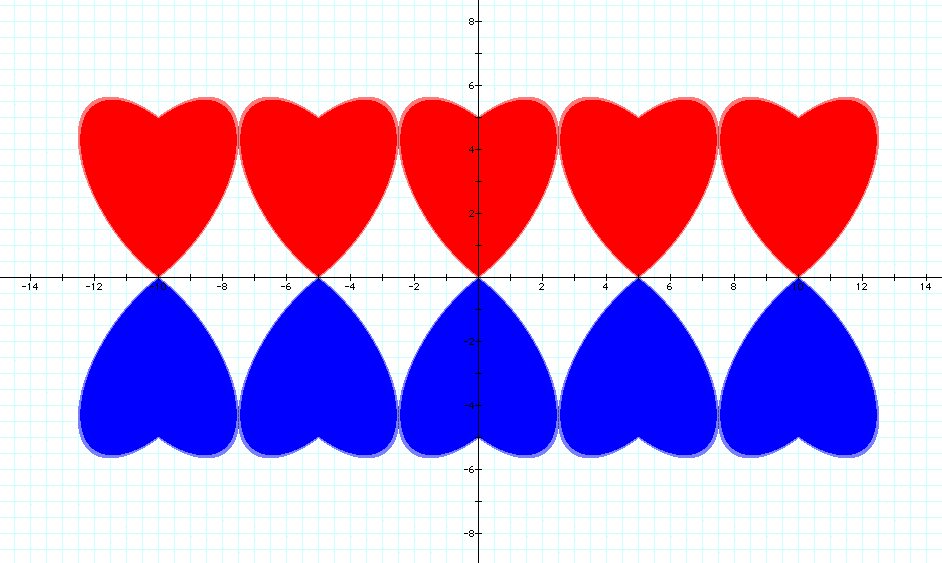
EMAT 6690
ESSAY 2 Site
Heart to Heart

This essay concerns the light "Hearted" subject of the equations assorted with the heart shape. What will be shown here, is the following:
- Equation derived from an ellipse and its reflection across the y-axis.
- A little explanation as to why this particular orientation of an ellipse seems to work.
- A brief set of examples as to effect of chaning basic parameters of the equation on the figure.
- Translations of the image and effects on the equation.
- Rotation of the image and effects on the equation.
The initial example presented is the variation of the ellipse.
An Ellipse and its Reflection


As can be seen, these pair of ellipses, provide the basis for our heart shape. From the equation, however, some of the curve is unnecessary. This is done by keeping the positive values of x unchanged, and reflecting the negative values of x across the plane.


Also, by changing
the values for A, B, C and the constant F (presently all 1), we
can "shape" the ellipse.

Why This Works...
As can be seen from the 4 graphs below, by changing the values of the coefficients and the constant on the right-hand side of the equation, the shape is modified.
The first example (black and red) changes that constant. (Coefficient F from the standard equation for conic shapes). As can be seen, as we increase the value of the constant, the size of the shape increase accordingly. In the graph shown, the values start at 100 and increase by 100 each step.
The second example (blue) shows the effect of changing the Coefficient A value. As the value of A increases, the ellipse starts to become more "rounded". The lower the value for A, then the ellipse will elongate. As from initial definitions for the ellipse, this coeeficient has an affect on the horizontal (axis) size of the figure. The figure is streched more along the x-axis than the y-axis
The third example (red) shows the effect of changing the Coefficient B value. As the value of B increases, the ellipse becomes more rounded as B increases. The lower the value for B, then the ellipse rotates and elongates along a different axis than with A. This is more in line with the i mpact on the y-axis, than the x-axis as seen with A.
The fourth example (green) shows the effect of changing the Coefficient C value. As the value of C increases, the ellipse becomes more elongated. (almost an opposite effect from A). As C decreases, it begins to fall into the more rounded shape of the ellipse.
Examples of Changing Equation Parameters
If QuickTime is available, use this link to see all A, B, and C coefficient changes dynamically:
Changing the Constant Value:

Changing the First Coeeficient:

Changing the Second Coefficient:

Changing the Third Coefficient:

Translations of the Equation (Example at the beginning)
The following shows a an example of translation of the same equation across the x-axis and the y-axis.
The basic shape fits into a area approximately 5 by 5 units. As a result, from simple tranposition of replacing x by x + 5 or x - 5 (and multiples of 5), we can translate the object either left or right, respectively. By changing y by y + 5 or y - 5 (and multiples of 5), we can also transpose the figure down or up respectively.

Rotation of the Equation:
The following shows a an example of rotation of the same equation about the origin.
Rotation is done by substituting:
